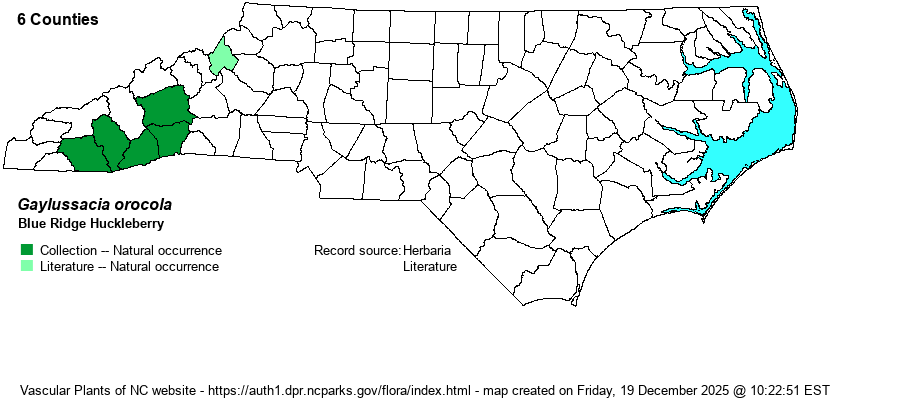| Author | (Small) Camp | |
| Distribution | So far known only from NC (i.e., a state endemic). Present only in the southern Mountains, rarely in the northern Mountains; Macon east to Buncombe counties, plus historically from Avery County. | |
| Abundance | Very rare to rare, and limited in habitat. This is a State Endangered species. | |
| Habitat | It occurs mainly in montane bogs, but it can be found in seepages (over granite). | |
| Phenology | Flowers in late spring and early summer. Fruits in summer? | |
| Identification | This rather small, deciduous shrub is basically the montane bog equivalent of Gaylussacia dumosa, though it is a taller species. It ranges from 1.5-3 feet tall, and has small rounded (though slightly obovate) leaves that are thick, dark green and shiny above, and dull green below. It is rhizomatous and thus occurs in colonies. Look for a fairly low shrub with shiny, rather coriaceous, and somewhat rounded leaves, often in a colony, in bog-like habitat. The dangling, white bell-shaped flowers should clinch the identification, if the plants are in bloom. Note that G. dumosa does grow rarely in the mountains, in the same range, but it grows essentially in uplands, not in bogs. | |
| Taxonomic Comments | As with several other huckleberries (i.e., G. bigeloviana, G. nana, and G. tomentosa), this taxon has been included with G. dumosa or G. frondosa until recently. In this case, it has often been considered within G. dumosa, though apparently it had never been described as a variety.
| |
| Other Common Name(s) | Blue Ridge Bog Huckleberry | |
| State Rank | S1 | |
| Global Rank | G1 | |
| State Status | E | |
| US Status | | |
| USACE-agcp | | |
| USACE-emp | OBL link |

